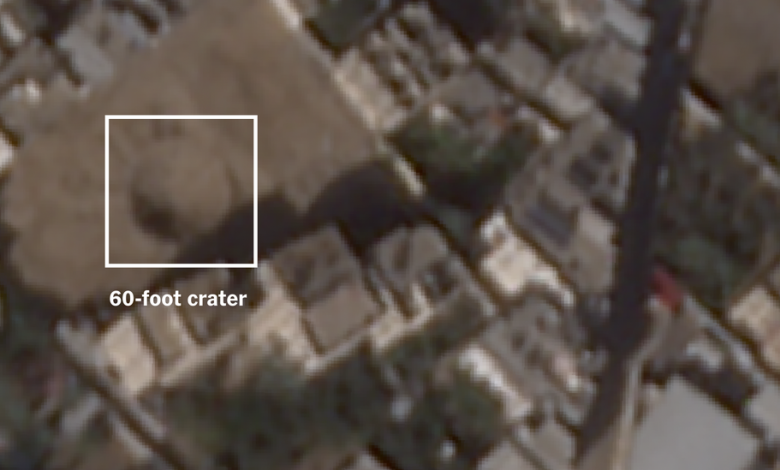A Times Investigation Tracked Israel’s Use of One of Its Most Destructive Bombs in South Gaza

During the first six weeks of the war in Gaza, Israel routinely used one of its biggest and most destructive bombs in areas it designated safe for civilians, according to an analysis of visual evidence by The New York Times.
The video investigation focuses on the use of 2,000-pound bombs in an area of southern Gaza where Israel had ordered civilians to move for safety. While bombs of that size are used by several Western militaries, munitions experts say they are almost never dropped by U.S. forces in densely populated areas anymore.
The Times programmed an artificial intelligence tool to scan satellite imagery of south Gaza for bomb craters. Times reporters manually reviewed the search results, looking for craters measuring roughly 40 feet across or larger. Munitions experts say typically only 2,000-pound bombs form craters of that size in Gaza’s light, sandy soil.
Ultimately, the investigation identified 208 craters in satellite imagery and drone footage. Because of limited satellite imagery and variations in a bomb’s effects, there are likely to have been many cases that were not captured. But the findings reveal that 2,000-pound bombs posed a pervasive threat to civilians seeking safety across south Gaza.
In response to questions about the bomb’s use in south Gaza, an Israeli military spokesman said in a statement to The Times that Israel’s priority was destroying Hamas and “questions of this kind will be looked into at a later stage.” The spokesman also said that the I.D.F. “takes feasible precautions to mitigate civilian harm.”
But U.S. officials have said that Israel should do more to reduce civilian casualties while fighting Hamas. The Pentagon increased shipments to Israel of smaller bombs that it considers better suited to urban environments like Gaza. Still, since October, the United States has also sent more than 5,000 MK-84 munitions — a type of 2,000-pound bomb.
Eric Schmitt, John Ismay, Neil Collier, Yousur Al-Hlou and Christoph Koettl contributed reporting.



